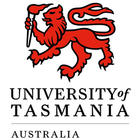Diploma of Fine Arts
Diploma of Fine Arts
Within this degree, you will develop skills in self-expression and creative problem solving to generate art work. You will be encouraged to participate in contemporary culture, engaging directly with Tasmania’s internationally acclaimed arts culture through our ongoing partnerships with festivals and arts institutions across the state. You will be provided…
Categories
COURSE DESCRIPTION
Within this degree, you will develop skills in self-expression and creative problem solving to generate art work. You will be encouraged to participate in contemporary culture, engaging directly with Tasmania’s internationally acclaimed arts culture through our ongoing partnerships with festivals and arts institutions across the state. You will be provided with opportunities to actively contribute to the cultural life of our society and interact with both Australian and international visiting artists.
You will gain an awareness of your own creative practice and the role and function of visual art and design within contemporary culture. You can choose from a range of selected units, which will provide a foundation for further study in fine art and/or enable you to encounter and develop skills in diverse art disciplines.
Learning Outcomes
1 Produce creative works and projects with speculative and iterative outcomes as a process of directed creative inquiry
2 Apply technical and theoretical knowledge to identify ideas, artefacts and methods in the arts in order to reflect on your own and others’ work.
3 Consider your practice within relevant and diverse contexts (e.g. social, cultural and historical)
4 Communicate ideas and processes to audiences and stakeholders using written, oral and visual skills.
Career outcomes
Diverse opportunities
Build a career you love in the ever expanding creative arts sector. In a world being redefined by innovation, design and creativity, a vast selection of exciting career opportunities present themselves:
Arts administrator
Creative director
Furniture designer
Illustrator
Multimedia artist
Museum or gallery curator
Painter
Photographer
Printmaker
Researcher
Sculptor
Sound artist
Video artist
Teacher
Further study
Open your options with further study, students who successfully complete the Diploma of Fine Arts may progress to the Bachelor Fine Arts.
Course structure
The Diploma of Fine Arts requires the completion of 100 credit points from the schedule.
You can complete the Diploma of Fine Arts with a broad engagement in Critical Practices and Studio Practice units all at Introductory (100) level, or specialise in specific studio practice units at Introductory and Intermediate (200) level.
If you wish to complete studio practice units at Intermediate units, you should complete the relevant Introductory level studio unit first.
For example, before attempting FSH214 Photography 2A you should complete FSH111 Photography 1.
REQUIREMENTS
Admission to undergraduate courses at the University of Tasmania requires the completion of qualifications equivalent to a 12th year of education in Australia.
You can also meet the General Entry Requirement for this course with the following qualifications or prior studies:
Completion of an equivalent AQF Certificate IV or above
Complete or incomplete (minimum 25 credit points) of previous tertiary study at Bachelor level or higher.
English language test scores: IELTS (Academic) – 6.0 (no individual band less than 5.5); TOEFL (iBT) – 72 (no skill below: Reading 10; Listening 9; Speaking 16; Writing 19); PTE Academic – 50 with no score lower than 42; UTAS English for Academic Purposes – EAP2 – 60% (no individual score less than 55%); Cambridge English C1 Advanced or B2 First – 169 with no less than 162 in any skill; Australian Education Management Group (AEMG) DEP EAP2 – Minimum overall score of 70% and no section score of less than 65%.
EDUCATIONAL INSTITUTION
The University of Tasmania was officially founded on 1st January 1890 and is located at Sandy Bay, Tasmania. In addition to the main campus at Sandy Bay, it also operates out of the Newnham Campus and the Cradle Coast Campus. The most popular courses offered are the environmental studies that include wilderness management, marine sciences and indigenous studies in Tasmanian literature. Other unconventional courses include agriculture development, studies on the community and population and ocean study programs. The university also comprises of a Music Conservatorium, Art school and a School of Clinical studies.




